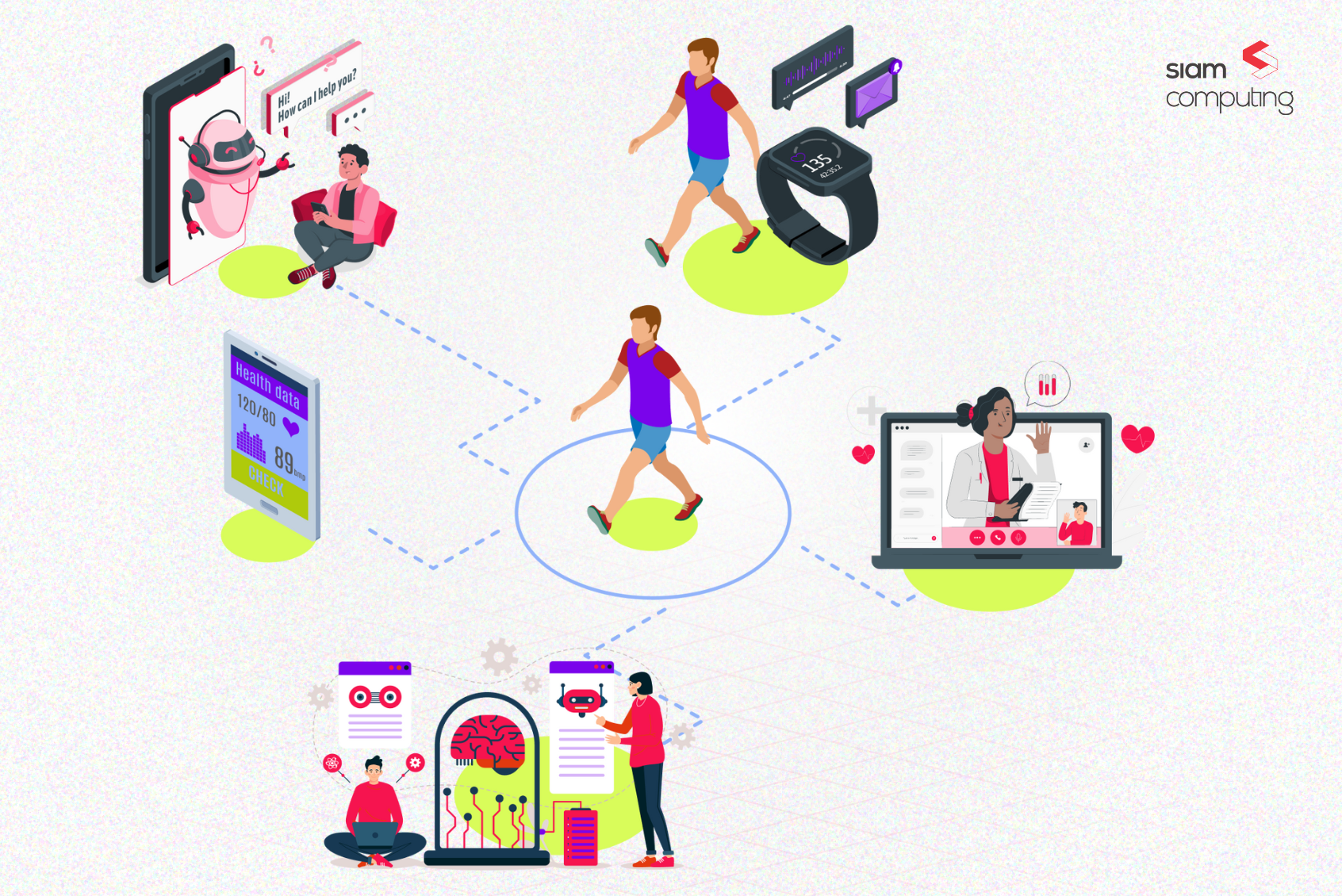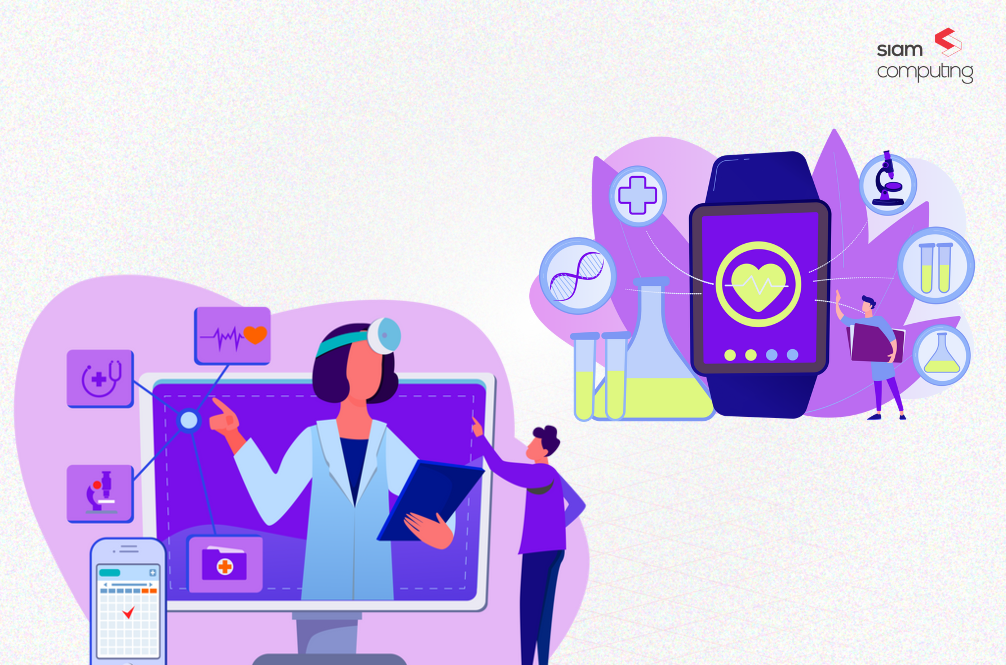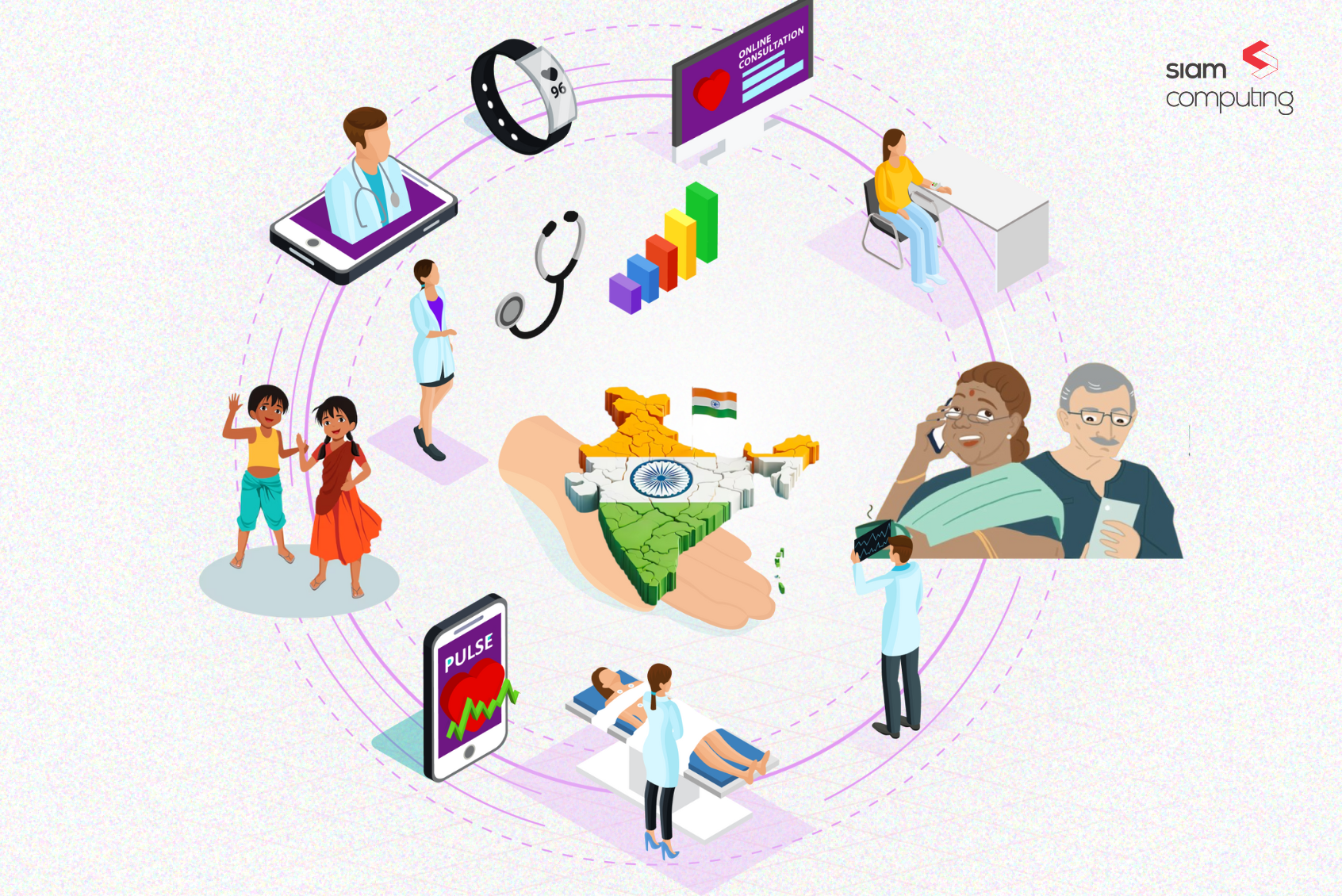Product teams designing digital healthcare solutions often approach development with a mindset rooted in traditional product creation. They assume users will be willing to learn the product and put in the effort to use it as they intended.
Unfortunately, this is rarely the case. End users, particularly in high-stress or high-emotion environments such as healthcare, won’t give your product a second glance if you build it to ‘sell’. You build a healthcare product to ‘care’, and the selling happens by itself.
Siam Computing has been building digital solutions in the healthcare space for over a decade, and I’d like to share eight learnings from our experience that we wish all product teams understood about the healthcare landscape.
The end users are not always patients
If you are building a patient experience product or any B2C solution in healthcare, there are two key user groups to consider: the person seeking care and the person providing it (doctors, nurses, and other medical staff). Each group has unique needs and considerations. Addressing them is tricky and vital.
At first glance, it’s natural for you to think that the end users on the care-seeker side are patients. But if you dig deeper, the care-seeking end users could also be the caretakers (friends and family of patients) attending to the patient’s needs.
The caretaker can be a mother booking an appointment for her sick daughter or youngsters accessing the digital medical reports of their parents or grandparents.
Primary users for healthtech products are Millenials and Gen Z
Traditionally, hospitals and healthcare services do not consider GenZ and millennials as target audiences, but they must. A youngster with a smartphone plays a vital role in healthcare decision-making, not just for themselves but also for their family.
They quickly look up symptoms of their family members, find a healthcare solution or facility to tend to those symptoms, and book online appointments with a doctor or clinic with good ratings and reviews. So, a healthcare provider not having youngsters as their target audience and not giving them easy access to digital health services will surely lose market share.
According to a global study by Accenture, younger patients are gravitating away from traditional care as virtual care is gaining steam. The study says that a vast majority (84%) of baby boomers have a primary care physician (PCP), while only 67% of millennials and just 55% of GenZ report having a PCP.
It reflects younger consumers’ discontent with the status quo. The study finds that 20% of GenZ say they’d like a PCP, but haven’t found one that meets their needs. Meanwhile, walk-in clinic care and virtual care – often delivered or facilitated by digital platforms have entered the mainstream, threatening to poach younger consumers by appealing to their preferences for speed, convenience, and personalization.
Growing up tech-savvy means younger generations seek the same ease from hospitals and doctors that they get from other domains, such as food delivery or ride-hailing, which the traditional healthcare model does not deliver.
Ease of access will mean different things to different users
When we were doing market research for one of South India’s biggest multi-speciality hospital chains, we figured that GenZ and millennials typically prefer a fully digital hospital experience that fits into their busy, less structured lifestyles. We found out that their first point of contact with the hospital system is mostly through social media, where they’ll expect a warm, informative presence that appeals to their senses.
As younger cohorts continue to propel digital health adoption, digital offerings like telemedicine, online appointment booking, and the ability to see lab results and follow-up information in their inbox or through the app – will likely evolve from ‘nice-to-have’ to ‘must-have’ features.
On the other hand, older patients are more likely to have discovered your system through traditional media or after being referred by a doctor. They’d probably expect to be contacted by someone who can answer their questions personally after booking appointments through an app and help them figure out the right care they need.
To build an efficient healthcare product, you must cater to both demographics without sacrificing quality. This is your chance to make a great impression on the younger care-seekers (millennials and GenZ). For existing patients (baby boomers), this is where you remind them why they chose you and continue to choose your services.
Don’t let technology hinder product experience
Understand that the care-seeking users of your healthcare product may be going through a rough patch now, physically and mentally. So, the digital solution you ask them to download to their phones in this situation in their lives is an extra burden, no matter how well it is built.
So, your role as a product leader is to make that as less burdensome as possible. Make the onboarding seamless and the user experience intuitive. Bring down the learning curve to use your product as minimally as possible.
Understand that not all patients may be comfortable using technology like remote monitoring or telehealth, and not all patients have access to the technology. This can create inequality in healthcare access, especially for rural and underserved areas.
Factor in the training you need to give to patients while building your healthcare products and, even more importantly, build it in a way that is as easy to use as the digital products they may already be using in their day-to-day lives.
Doctors are time-constrained and routine-oriented
When it comes to doctors, it is essential to remember that they are seeing hundreds of patients in a day, and they are overburdened. Healthcare is a high-stress, high-emotion landscape, and technology must be designed to make life easier and not more complicated for doctors.
For instance, we’ve often seen many healthcare products advertise voice assistants for noting prescriptions, which may look appealing but may not always be necessary. In a country like India with 22 major languages, drugs like omeprazole, lansoprazole, and esomeprazole would be pronounced in multiple different ways, which a voice assistant may not pick up accurately, leading to extra work for the doctor, or worse, the wrong medicine getting prescribed. So, in reality, it could be faster to write or type a prescription rather than having a tech intervention.
Moreover, integrating a new product or feature seamlessly into existing clinical workflows is a challenge many product teams underestimate. Healthcare professionals have established routines and workflows that new products must align with to be effective. Failure to consider these workflows can lead to resistance from healthcare providers and hinder the adoption of the product.
The ‘users’ and ‘buyers’ of products are different people.
Technologies intrinsic to a hospital’s functioning, like Electronic Health Records (EHRs), medical billing, medical diagnosis software, hospital management systems, and much more – are used by physicians and other health professionals, but are purchased by the hospital system.
Similarly, we are seeing digital health products used by patients, like fitness apps, paid for by health insurance providers, especially in Western Countries.
In both cases, the individuals using the products are not the ones shopping around and ultimately deciding to buy them. Product companies need to understand the needs and motivations of both the users and buyers in order to design products that convince organizations to purchase and entice individual users to use them.
Healthcare buyers are risk-averse and skeptical
The buyers in healthcare – including hospital management, healthcare professionals, insurance providers, or patients – are looking for tried and true, reliable products that drive cost savings and improve health.
We’ve seen that healthcare institutions such as hospitals are often hesitant to test new digital products and health apps. They tend to be more conservative and risk-averse due to serious digital risk, gaps in training and onboarding, and strict compliance regulations. Healthcare products face more privacy requirements than other industries.
The Health Insurance Portability and Accountability Act (HIPAA) in the US and the Digital Information Security in Healthcare Act (DISHA) in India are some of the stringent regulations that healthcare organizations must adhere to.
Payers and hospitals have a low tolerance for pilot, alpha, and beta products, partly because ‘veteran’ products have a longstanding history of compliance with regulations and can seem like the safer choice for payers and hospitals. That’s why you’ll often find hospitals operating legacy software that may be outdated and slow but are tried and tested.
We are witnessing a shift from Fee-for-Service to Value-Based Care
As healthcare advances, treatment pathways are now taking place digitally. App-based coaching and management for chronic diseases, telemedicine, and informational health bots are becoming common.
Since digital products now have more of an impact on the care experience, it’s easier to track treatment adherence and the quality of care delivered. This has ushered in a shift from a fee-for-service model toward value-based care in healthcare.
Fee-for-service (FFS) care, the traditional healthcare reimbursement model, rewards healthcare providers for each service they perform – so there’s no incentive to limit unnecessary tests, procedures and other services. With value-based care, providers are rewarded based on the quality of care provided to patients. The growing adoption of value-based care will help incentivize the outcomes that patients, payers, and hospitals desire – high quality of service rather than high quantity.
This shift from fee-for-service to value-based care is already happening in full swing in the US. India is following closely behind, with the government establishing effective ways to adopt a value-based care model in the world’s largest tax-funded health insurance scheme- PM-JAY.
So, product leaders in healthcare must understand the healthcare reimbursement landscape to optimize for health metrics that matter to hospitals and payers – such as hospital readmissions, quality of preventive care, and health technology. We can measure the success of digital health products based on the key performance indicators that determine care reimbursement and use that lens to prove the products’ importance to health organization leadership.
Pioneer the Future of Healthcare Technology with Siam Computing
The multifaceted nature of healthcare and its users, from patients to caregivers and professionals, necessitates a paradigm shift in product thinking. Success in healthtech hinges on a blend of empathy, innovation, and adaptability, and not just technology. It demands a holistic approach, one that transcends conventional product design.
We hope these insights, gained through a decade of navigating this intricate terrain, serve as a valuable guide for product teams venturing into the realm of healthcare. By embracing these learnings, product leaders can forge a path towards impactful solutions that genuinely prioritize care over mere transactions.
As we conclude this exploration into the intricacies of healthcare technology, we invite you to take the next step towards shaping the future of care. Reach out to our product strategists today, and together, let’s build a future where technology and healthcare seamlessly converge for the betterment of all.








